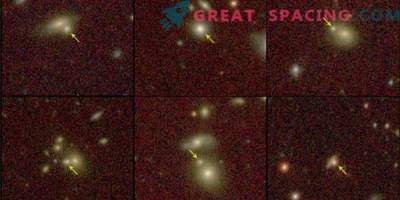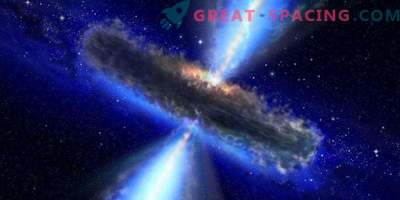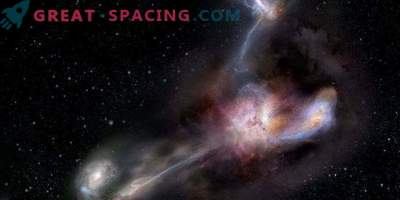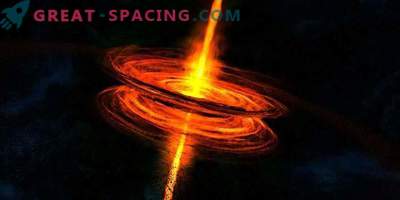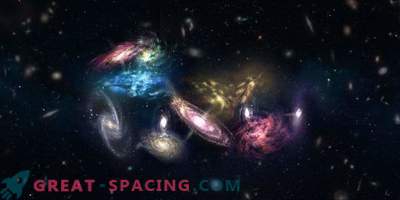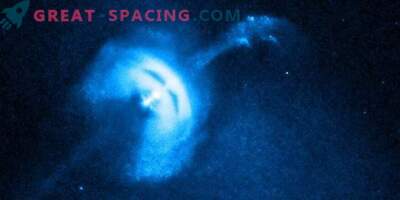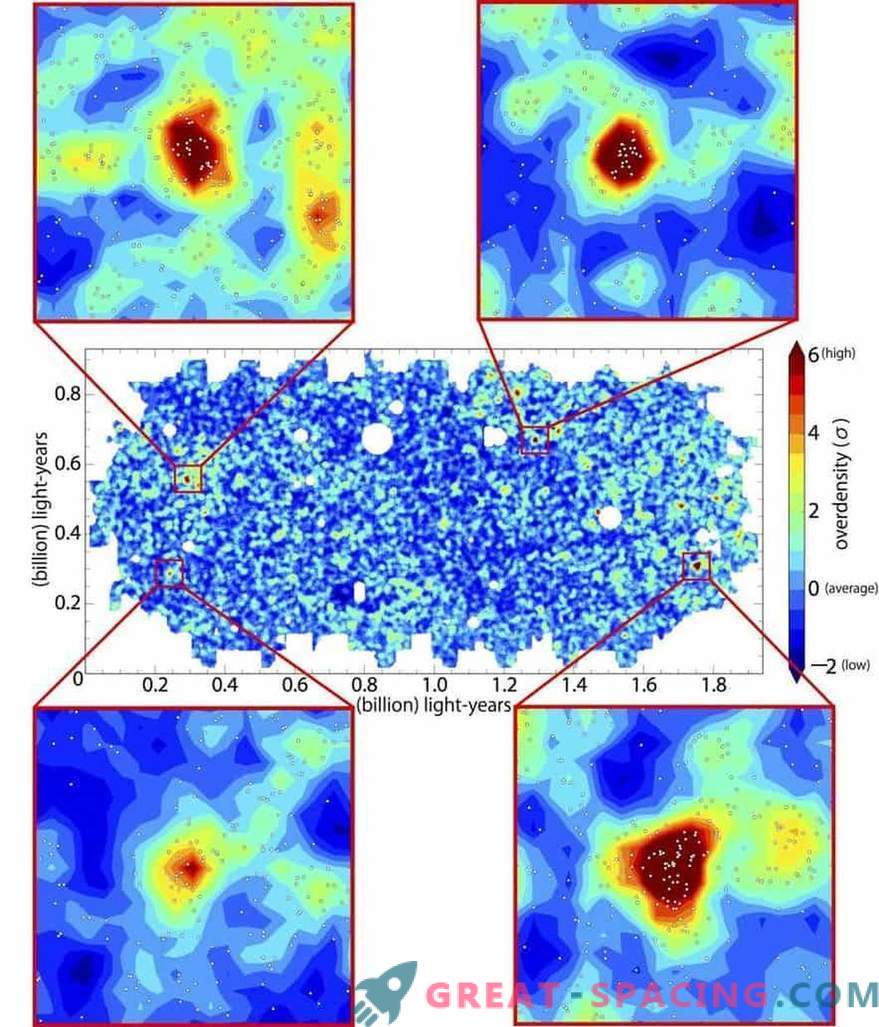
This is a distribution of galaxies and a close-up of some HSC protoclusters. Higher and lower density areas are represented by red and blue colors. In close-up, white circles mark the location of distant galaxies. Red areas are expected to evolve into galactic clusters.
Using Hyper Suprime-Cam (HSC) on the Subaru telescope, scientists were able to identify about 200 protoclusters - the precursors of galactic clusters in the early Universe (12 billion years ago). They also revealed that quasars are not inclined to be in protoclusters. However, if there is one, then there should be a second one nearby. The results raise doubts about the relationship between protoclusters and quasars.
In space, galaxies are evenly distributed. There are certain places called clusters where tens and hundreds of galaxies are located close to each other. Other galaxies are isolated. To find out how and why clusters form, it is important to study not only mature representatives in real time, but also to observe protoclusters that are still being formed.
The speed of light is finite, so observing distant objects allows you to look back in time. For example, the light from an object living at a distance of 1 billion light years from us was actually thrown out 1 billion years ago and has since spent time on space travel. Watching the light, scientists are able to see the image of what the universe was at that time. However, even in this perspective, protoclusters are rare and difficult to observe. Previously, only 20 such objects were known. It is difficult to track remote protoclusters directly, therefore, quasars are sometimes used. When a large volume of gas falls to a central supermassive black hole, it collides with another gas and heats up to extreme temperatures. He begins to glow brightly and becomes a quasar. The idea was that when many galaxies are close to each other, the merging of two of them will create instability and cause gas to flow into a supermassive black hole of one of the galaxies, creating a quasar. However, due to the rarity of quasars and protoclusters, this link could not be confirmed observantly.
To realize the nature of protoclusters in the early Universe, more observations will be needed. Now scientists are conducting an unprecedented large-scale systematic review of protoclusters in the Subaru telescope. Researchers have already managed to identify 200 regions in which galaxies gathered and formed protoclusters 12 billion years ago.
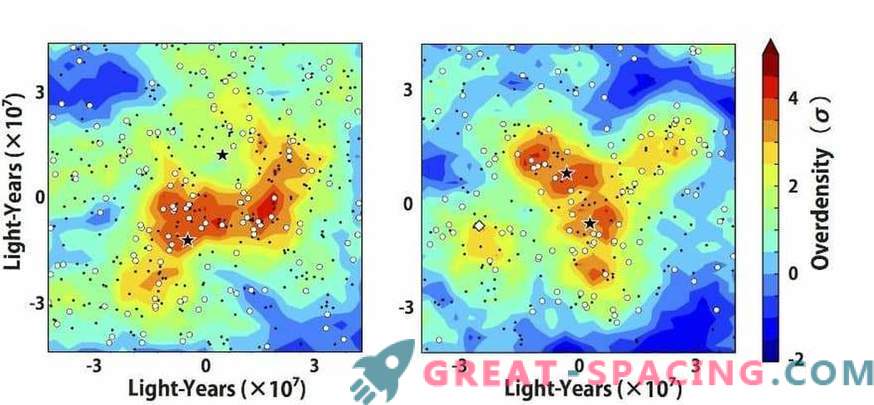
Stars indicate quasars and bright (weak) galaxies in the same epoch (in the form of points). The contour shows galaxy redundancy relative to average density. The researchers also looked at the relationship between protoclusters and quasars. They studied 151 quasars in the same era and found out that most of them are not close to superdense galactic regions. In fact, the brightest quasars avoid the densest sections. The data suggests that quasars are not a good indicator of protoclusters, and mechanisms other than galactic fusions will be needed to explain their activity.
However, scientists found two pairs of quasars living in protoclusters. This is a rare phenomenon, and it hints at the possibility that the quasar activity is synchronous in the environment of protoclusters. HSC observations are important because they allowed systematic examination of protoclusters for the first time. By the time the review is completed, scientists plan to find thousands of protoclusters.


